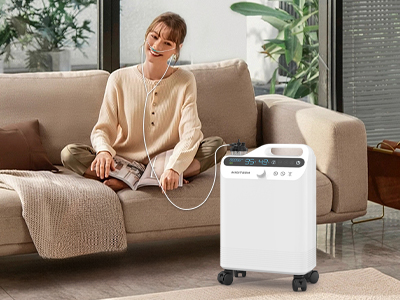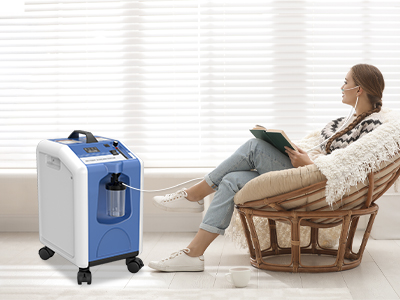15 Mar 2024
Oxygen concentrators play a crucial role in providing continuous oxygen therapy to patients with respiratory conditions such as COPD, asthma, and lung disease.

Flow Rate in Oxygen Concentrators
A. What are Oxygen Flow Rates?
The flow rate refers to the rate at which oxygen is delivered from the concentrator to the patient, measured in liters per minute (LPM).
B. Importance of Flow Rate in Oxygen Therapy
The flow rate determines the amount of oxygen delivered to the patient's lungs, which is essential for maintaining adequate oxygenation and respiratory function.
Factors Affecting Oxygen Flow Rates
A. Patient's Medical Condition
The severity of the patient's respiratory condition and their oxygen saturation levels influence the prescribed flow rate.
B. Prescription from Healthcare Provider
The healthcare provider prescribes the appropriate flow rate based on the patient's condition, oxygen requirements, and response to therapy.
Interpreting Oxygen Flow Rates
A. Low Flow Rates
Low flow rates (1-2 LPM) are typically used for patients with mild hypoxemia or during periods of rest.
B. Moderate Flow Rates
Moderate flow rates (3-6 LPM) are prescribed for patients with moderate hypoxemia or during activities that require increased oxygen demand.
C. High Flow Rates
High flow rates (>6 LPM) are reserved for patients with severe hypoxemia or those requiring intensive oxygen therapy, such as during acute exacerbations of respiratory conditions.

3 Liters per Minute (LPM) Oxygen Flow Rate
A. Definition and Interpretation
A flow rate of 3 LPM indicates that the concentrator is delivering 3 liters of oxygen per minute to the patient.
B. Application in Clinical Settings
A flow rate of 3 LPM may be considered moderate and is commonly prescribed for patients with moderate respiratory insufficiency or during moderate physical activity.
Assessment of Oxygen Requirements
A. Individual Patient Needs
Each patient's oxygen requirements are unique and may vary based on factors such as age, weight, underlying health conditions, and activity level.
B. Titration of Oxygen Therapy
Oxygen therapy should be titrated to achieve the desired oxygen saturation levels while minimizing the risk of oxygen toxicity.
Safety Considerations
A. Monitoring Patient Response
Healthcare providers must closely monitor patients receiving oxygen therapy to assess their response and adjust the flow rate as needed.
B. Prevention of Oxygen Toxicity
Excessive oxygen delivery can lead to oxygen toxicity, characterized by lung damage and other complications, highlighting the importance of proper titration and monitoring.
Conclusion
A. Importance of Understanding Oxygen Flow Rates
Understanding the significance of oxygen flow rates is essential for healthcare providers to prescribe appropriate oxygen therapy and optimize patient outcomes.
B. Individualized Approach to Oxygen Therapy
By tailoring oxygen therapy to meet the specific needs of each patient, healthcare providers can ensure safe and effective treatment while minimizing the risk of complications.
Keywords: oxygen concentrator
Originally published 15 Mar 2024, updated 15 Mar 2024.